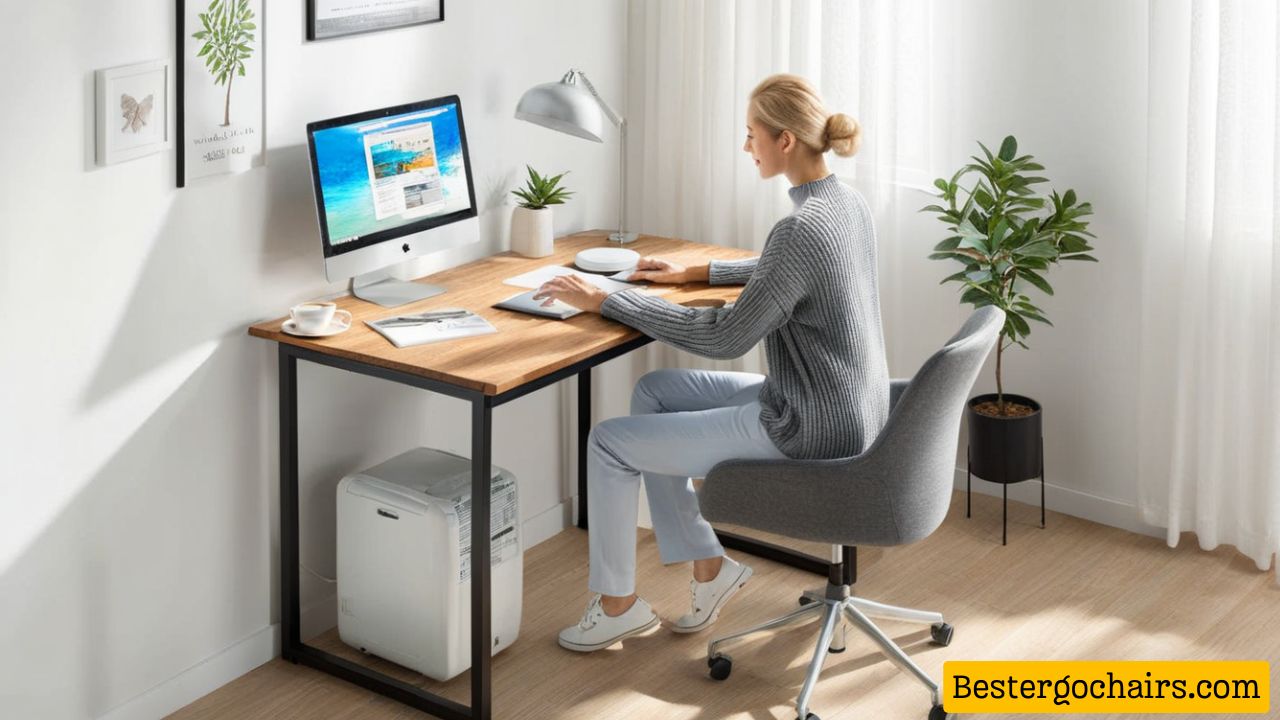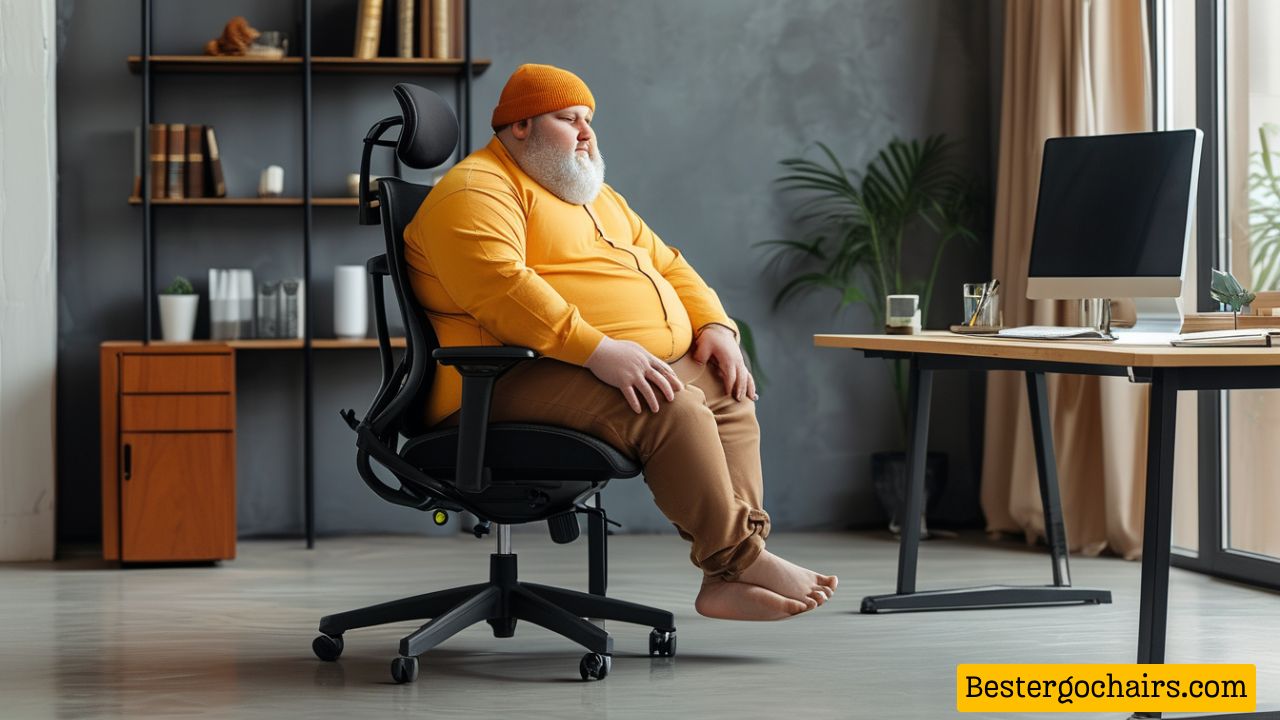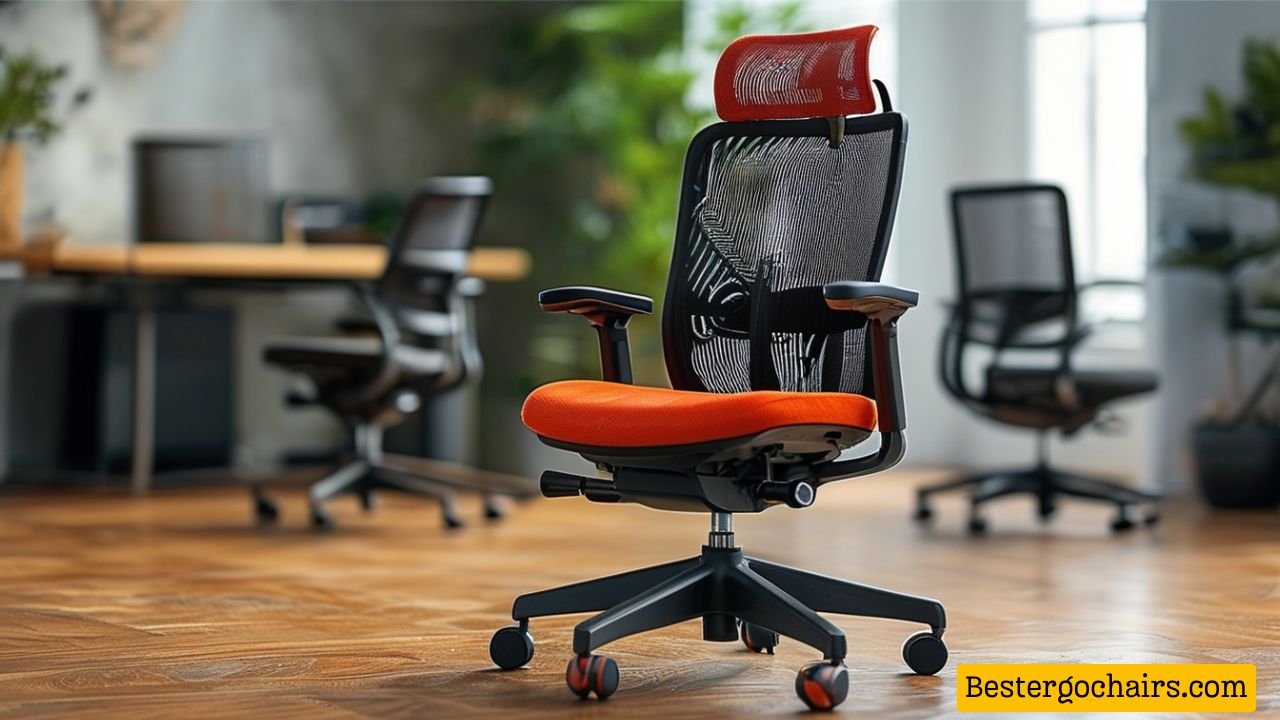In the increasingly sedentary modern world, the way we sit has become a crucial factor in our overall health and wellbeing. While we may not give much thought to the chair we choose or how we position ourselves, the science of ergonomics underlines the profound impact proper seating has on our physical and mental health. This article delves deep into the scientific principles behind ergonomic seating, exploring why it matters, its benefits, and the best practices for achieving optimal posture and comfort.

Understanding Ergonomics: A Science of Fit
Ergonomics, derived from the Greek words ergon (work) and nomos (laws), is the study of how humans interact with their environment. It seeks to optimize the design of products, systems, and workplaces to improve efficiency, comfort, and safety. In the context of seating, ergonomics focuses on designing chairs that support the natural curves of the body, reduce stress on muscles and joints, and promote healthy posture.
The Historical Context of Ergonomics
The concept of ergonomics dates back to ancient civilizations, where the importance of fit between human capabilities and tasks was recognized. However, it wasn’t until the 20th century that ergonomics began to take shape as a formal discipline. With the rise of industrialization and the need for improved worker productivity, researchers started to analyze how work environments could be optimized for human use.
Today, ergonomics encompasses various fields, including psychology, engineering, and physiology. The goal remains the same: to create environments that enhance human performance while ensuring safety and comfort. As we delve deeper into the science of ergonomics, we can appreciate its significance in our daily lives, particularly concerning seating.
The Role of Ergonomics in Modern Workplaces
As more people transition to desk jobs and remote work, the relevance of ergonomics has surged. Poorly designed workspaces can lead to discomfort, decreased productivity, and long-term health issues. Employers are increasingly recognizing the value of investing in ergonomic solutions, not only to enhance employee satisfaction but also to reduce healthcare costs associated with musculoskeletal disorders.
Incorporating ergonomic principles into workplace design involves evaluating factors such as chair height, desk layout, and equipment positioning. By creating an environment that promotes good posture and reduces strain, organizations can foster a healthier workforce and boost overall morale.
The Anatomy of a Healthy Spine
To understand the importance of ergonomic seating, we need to grasp the mechanics of the human spine. Our spine is not a straight rod but a series of interconnected bones called vertebrae, separated by discs that act as shock absorbers and allow flexibility. These vertebrae naturally curve into four sections:
Cervical Region
The cervical region is located at the neck and supports the head. It consists of seven vertebrae and allows for a wide range of motion, including nodding and rotation. Maintaining proper alignment in this area is crucial, as poor posture can lead to tension headaches and neck pain.
Thoracic Region
The thoracic region comprises twelve vertebrae in the upper back, where the ribs attach. This section provides stability and protects vital organs such as the heart and lungs. A well-supported thoracic region helps maintain an upright posture, reducing the risk of slouching.
Lumbar Region
The lumbar region is the lower back, supporting the majority of body weight. It plays a vital role in maintaining a healthy posture and distributing weight evenly across the spine. The lumbar curve is crucial for shock absorption and allows for optimal movement. When seated, maintaining the natural curve of the lumbar spine is essential to prevent discomfort and injury.
Sacral Region
The sacral region forms the base of the spine and connects to the pelvis. It consists of five fused vertebrae and plays a role in weight distribution when sitting. Proper seating should accommodate this area to ensure balanced support throughout the spine.
Understanding the anatomy of the spine highlights the importance of choosing seating that aligns with these natural curves. Ergonomic chairs are designed to support these anatomical features, promoting a healthier sitting posture.
The Consequences of Poor Seating: A Cascade of Discomfort
When we sit in poorly designed chairs, we disrupt the natural alignment of our spine, leading to a cascade of consequences. The repercussions of inadequate seating extend beyond mere discomfort; they can significantly impact our overall health.
Muscle Strain and Pain
Incorrect posture puts excessive pressure on the muscles and ligaments supporting the spine. This can lead to muscle fatigue, stiffness, and pain in the neck, shoulders, back, and hips. Over time, chronic muscle strain can result in conditions such as tendinitis or myofascial pain syndrome, which can severely limit mobility and quality of life.

Disc Compression
Poor seating can compress the intervertebral discs, which act as cushions between the vertebrae. This compression can cause pain, numbness, tingling, and even herniated discs. Herniated discs occur when the inner gel-like substance of the disc bulges out, pressing on nearby nerves. This condition often requires medical intervention and can lead to long-term complications if not addressed promptly.
Reduced Circulation
Sitting for long periods, especially in chairs without good lumbar support, can constrict blood flow to the legs and lower back. This can lead to discomfort, swelling, and even varicose veins. Additionally, reduced circulation can contribute to feelings of fatigue and lethargy, making it difficult to concentrate and perform tasks effectively.
Digestive Issues
Poor posture can affect digestion by putting pressure on the stomach and intestines. This can lead to bloating, constipation, and heartburn. Sitting hunched over can compress the abdominal organs, impairing their function and leading to gastrointestinal discomfort.
Mental Fatigue and Stress
Sitting in an uncomfortable chair can create mental stress and fatigue. A body that is constantly trying to compensate for poor posture requires more energy, leading to reduced focus, concentration, and overall productivity. Chronic discomfort can also contribute to anxiety and depression, further impacting mental health.
Recognizing the consequences of poor seating emphasizes the importance of investing in ergonomic solutions. By prioritizing proper seating, we can mitigate these negative effects and promote overall wellbeing.
The Benefits of Ergonomic Seating: Investing in Your Wellbeing
Recognizing the detrimental effects of poor seating, ergonomic principles are employed to design chairs that prioritize comfort, support, and optimal posture. These benefits go beyond simple comfort, extending to various aspects of our lives.
Reduced Muscle Aches and Pain
Ergonomic chairs offer superior lumbar support, reducing stress on the spine and preventing muscle strain. They often feature adjustable seat heights, backrests, and armrests, allowing for personalized comfort and promoting proper posture. By providing adequate support, ergonomic seating can alleviate existing pain and prevent future discomfort.
Improved Circulation
Some ergonomic chairs incorporate features that promote blood flow, such as tilting mechanisms and mesh backrests that allow for better air circulation. Improved circulation can lead to increased energy levels and reduced fatigue, enhancing overall productivity and focus.
Enhanced Focus and Productivity
Sitting comfortably in a supportive chair can minimize distractions and improve focus, leading to increased productivity. This is particularly crucial for office workers and students who spend prolonged periods seated. When individuals feel comfortable and supported, they are more likely to engage fully in their tasks, resulting in higher quality work.
Prevention of Long-Term Health Issues
By mitigating the negative effects of prolonged sitting, ergonomic seating can help prevent chronic pain, disc problems, and other health complications associated with poor posture. Investing in ergonomic solutions is not just a short-term fix; it is a long-term investment in health and wellbeing.
The benefits of ergonomic seating extend beyond individual comfort. Organizations that prioritize ergonomic design can experience reduced absenteeism, increased employee satisfaction, and improved overall performance.
Choosing the Right Ergonomic Chair: A Guide to Fit
The perfect ergonomic chair does not exist as a one-size-fits-all solution. Each individual needs to consider their specific body type, height, and work activities to find the right chair for their needs. However, some key features to look for include:
Lumbar Support
A prominent lumbar curve that aligns with the natural curve of your lower back is essential for supporting the spine and alleviating pressure. Chairs with adjustable lumbar support allow users to customize the level of support based on their unique needs.
Adjustable Seat Height
The ability to adjust the seat height allows for proper leg positioning, ensuring feet are flat on the floor and knees are bent at a 90-degree angle. This adjustment is critical for maintaining good posture and preventing strain on the lower back.
Adjustable Backrest
A backrest that can tilt and recline allows for customized comfort and prevents slouching. Users should be able to find a position that feels natural and supportive, reducing the risk of discomfort during extended sitting periods.
Adjustable Armrests
Armrests should be comfortable and placed at a height that allows your shoulders to relax. Adjustable armrests can help reduce strain on the shoulders and neck, promoting a more relaxed sitting posture.
Breathable Materials
Choosing chairs with breathable fabrics like mesh can help prevent overheating and discomfort. Good ventilation is essential for maintaining comfort, especially during long hours of sitting.
Stability and Durability
A sturdy and durable chair that can withstand regular use is important for long-term comfort and support. Investing in a high-quality ergonomic chair ensures that it will provide reliable support for years to come.
Weight Capacity
Ensure the chair’s weight capacity matches your body weight for safe and reliable support. Chairs that are not designed to accommodate specific weight limits can compromise safety and comfort.
Finding the right ergonomic chair is a personal journey that requires careful consideration of individual needs and preferences. By prioritizing ergonomic features, individuals can create a comfortable and supportive workspace.
Beyond the Chair: Embracing Ergonomics in All Aspects of Seating
Ergonomics extends beyond just choosing the right chair. It encompasses all aspects of seating, from your desk setup to your sofa at home. Here are some practical tips for embracing proper ergonomics in your daily life:
Desk Setup
Ensure your desk height is appropriate, allowing your elbows to be at a 90-degree angle when typing. Use a monitor stand to position the screen at eye level and prevent neck strain. An organized and ergonomic workspace can significantly enhance comfort and productivity.
Keyboard and Mouse Positioning
Keep the keyboard and mouse within easy reach, avoiding awkward arm movements. Use ergonomic keyboard and mouse designs that promote neutral wrist positions. Proper positioning can reduce the risk of repetitive strain injuries and enhance overall comfort.
Taking Breaks
Get up and move around regularly to break up long periods of sitting. Stand and stretch every 20-30 minutes to maintain good circulation and posture. Incorporating movement into your routine can help combat the negative effects of prolonged sitting.
Varying Seating Positions
Experiment with different seating positions throughout the day, using a standing desk or a balance ball to change your posture and engage different muscle groups. Alternating between sitting and standing can promote better circulation and reduce fatigue.
Home Seating
Choose sofas and chairs that offer good lumbar support and are comfortable for extended periods. Creating an ergonomic home environment is essential for relaxation and overall wellbeing.
Driving
Adjust your car seat to ensure proper posture, with your back straight and knees bent at a 90-degree angle. Proper seating while driving can prevent discomfort during long commutes and enhance overall safety.
Embracing ergonomics in all aspects of seating allows individuals to create a holistic approach to comfort and wellbeing. By making small adjustments to daily routines, we can significantly improve our overall health.
The Future of Ergonomic Seating: Embracing Innovation
As research into ergonomics advances, we can expect continued innovations in seating design. Here are some exciting trends:
Smart Seating
Chairs equipped with sensors and algorithms that monitor posture and adjust features in real-time to improve comfort and support. Smart seating technology can provide valuable feedback to users, helping them maintain optimal posture throughout the day.
Active Seating
Innovative chairs that encourage movement and mimic natural walking motions, promoting good circulation and preventing sedentary behaviors. Active seating options can enhance engagement and promote better overall health.
Personalized Seating
Chairs that use biometrics and artificial intelligence to tailor seating configurations to individual needs and preferences. Personalized seating solutions can revolutionize the way we think about comfort and support.
The future of ergonomic seating holds great promise, with advancements aimed at enhancing user experience and promoting overall wellbeing. As technology continues to evolve, we can expect to see innovative solutions that cater to the diverse needs of individuals.
Conclusion
Investing in your comfort and health through ergonomic seating is not merely a luxury; it is a fundamental necessity in today’s sedentary lifestyle. By understanding the science behind ergonomics and embracing its principles in everyday life, we can minimize the risks of musculoskeletal problems, improve focus and productivity, and enjoy a more comfortable and healthy existence. Whether you are a student, an office worker, or someone who simply values comfort, proper seating matters. Prioritizing ergonomic solutions today can lead to a healthier, happier tomorrow.





